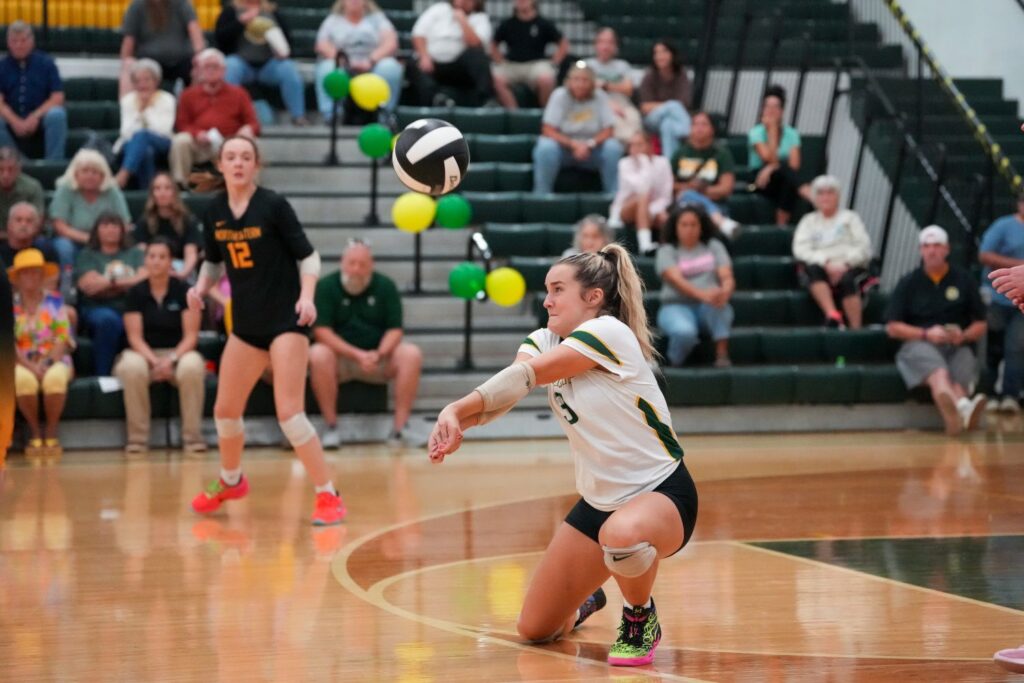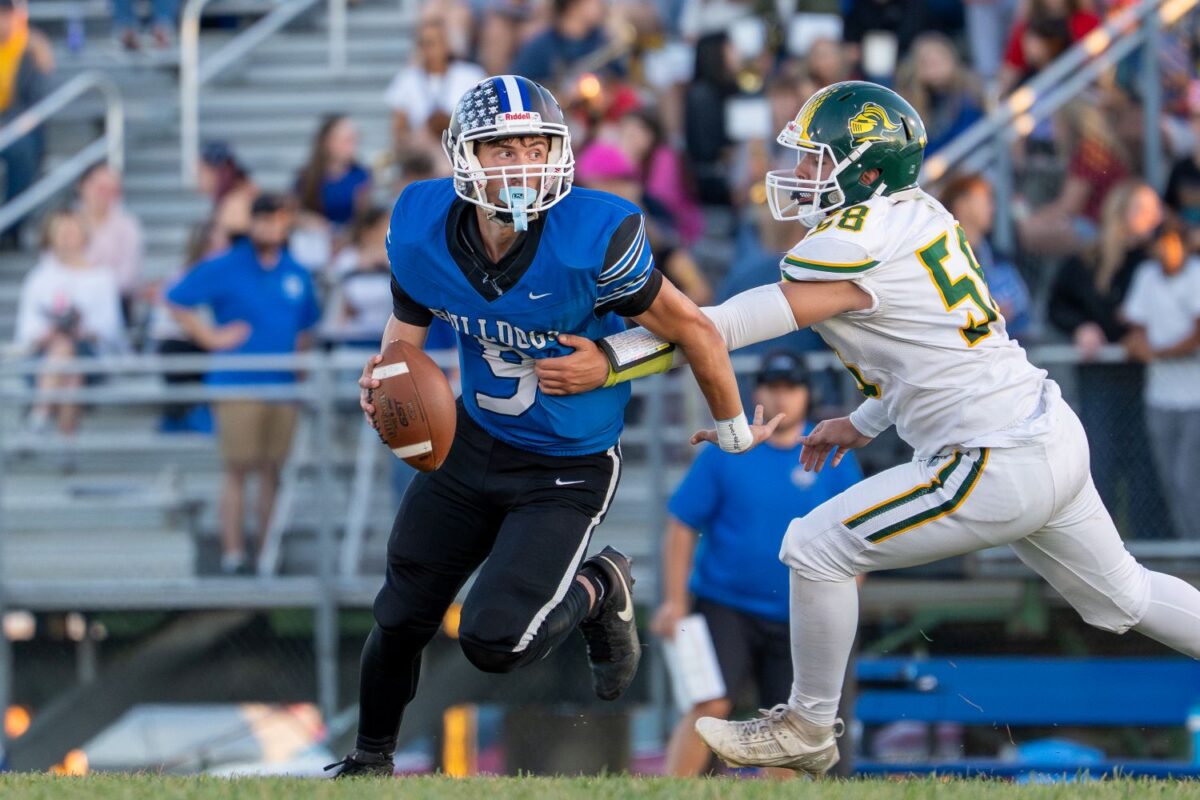Some schools in the Tri-Eastern Conference are discussing making changes, but so far, it’s just a discussion. I have been following TEC sports for decades, and a version of the same discussion has been happening the entire time.
The conference has seen many highs and lows. I have watched TEC teams compete in semistate games, and six times I’ve watched them vie for a state title. But it hasn’t always been “Friday Night Lights” — I’ve watched football games on Saturday afternoons because a TEC team couldn’t afford lights for their field.
The recent upheaval in this 60-plus-year-old athletic conference started with private talks among some member schools to consider changes. Centerville and Northeastern have both explored the possibility of leaving altogether. A member vote at a Sept. 8 meeting that was supposed to be confidential was later disclosed at area school board meetings, first reported by the Liberty Herald and later by this publication. The Sept. 11 Herald story said the conference meeting “did not go well.” The article continued:
“There were two motions voted on and it wasn’t a pleasant meeting. There is some dissension in the group. Northeastern and Centerville wanted to leave the conference for football only because they feel they aren’t getting the competition their players deserve. This was voted down and they weren’t allowed to join another conference with just football, nor were they allowed to leave the conference.”
Centerville and Northeastern, or any other member school, always has the option to withdraw from the TEC as long as they either fulfill or buy out their current contractual obligations. Northeastern athletic director Ryan Halloran said the school would leave if Centerville leaves.

Comings and goings
The Tri-Eastern Conference was originally formed in 1962 by five schools: Cambridge City, Centerville, Knightstown, Liberty and Union City. The five charter members are still among the nine member schools, although two have consolidated and changed names. Cambridge City consolidated with Milton and is now Lincoln. Liberty became Short in 1965 and then became Union County in 1973. When the league was formed, Liberty did not have football. Brookville, now Franklin County, and Hagerstown both joined the league in 1966. Knightstown left the conference in 1968, but rejoined in 2017. Winchester joined in 1972 and Brookville left in 1973. Northeastern joined in 1974 and Tri in 1989.
When the league was originally formed, the schools had reasonably comparable enrollments. For a variety of reasons, that is no longer true. Arguably one of the biggest reasons for the enrollment shift has been changes in the state legislature that allow students to attend the school of their choice, regardless of where they live.
Northeastern and Centerville have both benefited from an exodus of students from Richmond Community Schools. Some data suggests that 25-35 percent of students currently enrolled at Centerville and Northeastern live out of district.
Centerville and Northeastern recently made proposals to the TEC for changes in the league structure. One proposal was to add Eastern Hancock and Shenandoah. That proposal was voted down. A proposal was made to add Eastern Hancock, Monroe Central, Shenandoah and Wes-Del and divide the conference into large and small divisions.
There are other conferences that use that approach. The Indiana Conference, for example, has four schools (East Central, Connersville, Lawrenceburg and Batesville) in their Big School Division and South Dearborn, Franklin County, Rushville and Greensburg in their Small School Division. But that proposal was also voted down.
There was some interest in both proposals, but any changes required a two-thirds majority to pass. Both failed by a vote of 5-4.
Driven by football
The current push for change is driven strictly by football. In the eyes of many, the TEC has become a league of haves and have-nots. Centerville and Northeastern have dominated the league in football in the last six years. Northeastern won the conference in 2024, Centerville won it in 2023, and they shared it in 2022. Centerville won it in both 2021 and 2020, and Northeastern won it in 2019.
Yet, during that time period, neither program has won a sectional. Both now contend that it is because they are forced to play against weaker opponents in their own conference and, as a result, are less prepared to face competition in postseason games. It is a tough argument for Centerville to make with two conference losses this season, but more importantly, I think both programs are selling themselves short.
It is very difficult to win a sectional in any sport. Centerville and Northeastern are both in Football Sectional 38, loaded with good teams. Lapel is the top-ranked team in sectional 38. Their enrollment is slightly less than Centerville, but they have a roster of 80 players. Eastern Hancock is ranked second, and they lost to Centerville head-to-head this season. In their sectional matchup last season, Lapel won by a score of 43-36 over Northeastern in a game that could have gone either way. Lapel went on to win the sectional and then lost to Indianapolis Lutheran 35-0 in the regional.
The reality is that frustration about never winning a sectional can lead to overreaction.
Centerville and Northeastern are both capable of winning a sectional this year. I would love to see one of them raise the trophy, but if they fall short, it won’t be Lincoln, Union City or Union County’s fault. It is on each team to perform in the big moment on the big stage.
A new conference forms
The latest development is the newly announced Eastern Crossroads Conference. Eastern Hancock, Lapel, New Castle and Shenandoah are all committed, and Centerville, Delta and Northeastern will be invited, according to an Oct. 2 news release by Eastern Hancock Schools Athletic Director Aaron Spaulding.
The ECC will feature athletics, including cheerleading, and academic contests at both the high school and middle school levels. ECC organizers believe the optimum number of members is eight, but they want to make sure all schools in the conference are a good fit, Spaulding said.
The ECC plans to start writing formal bylaws in November, but Spaulding said there are enough logistics to work through that it might be the 2027-2028 school year before they can start.
As of this writing, Wayne County schools are considering that invitation slowly. Centerville-Abington Community Schools Superintendent Mike McCoy told WWN the Bulldogs were a bit surprised at how quickly this offer happened. He said they will do their best to determine what is best for its students, school and ultimately the community. Northeastern Wayne Superintendent Jennifer O’Brien told WWN they hadn’t received the invitation as of Oct. 3, but would take it under consideration. There’s currently no deadline for a response.
Change is inevitable
Membership in the TEC involves more than football, and every member school has had periods of success in different sports. Success in small enrollment schools is, and always will be, cyclical. The TEC has been a good fit for its member schools in the past; if that is no longer true, so be it.
Now the ball is in Centerville and Northeastern’s court. Neither has comparable facilities to the schools committed to the new conference, and though Spaulding has said they will not face upgrade requirements to join ECC, there might still be significant expenditures.
If they choose to leave, TEC events, like the Wayne County tournament in several sports, and the ability to schedule TEC member schools could be collateral damage. If Centerville and Northeastern choose to join the ECC, the timetable will be at least two years. By then, most of their current rosters will have graduated.
The TEC will survive, but it will never be the same.
Centerville’s next board meeting is at 7 p.m. Wednesday, Oct. 8, at its administration building, 115 W. South St., Centerville. Northeastern’s board meets at 6 p.m. Wednesday, Oct. 15, in its student services building, 7299 U.S. 27 N., Fountain City. The public is invited.
Millicent Martin Emery contributed to this article.
A version of this article will appear in the October 8 2025 print edition of the Western Wayne News.

